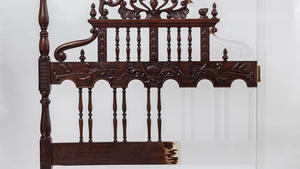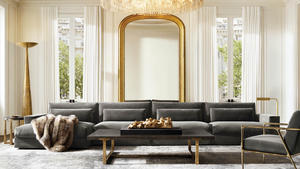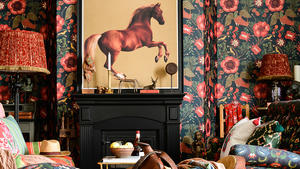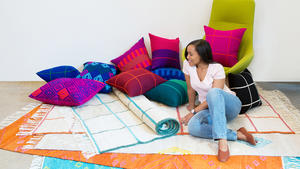The Indian state of Rajasthan is a royal one—steeped in tradition and history, it’s home to several palaces previously owned by a multitude of kings. Interesting then, that when modern design firm Hèrmosa chose a location for its 10,000-square-foot contemporary home furnishings flagship store, they picked Rajasthan’s capital, Jaipur (also known as the “Pink City” due to the color of its medieval architecture).
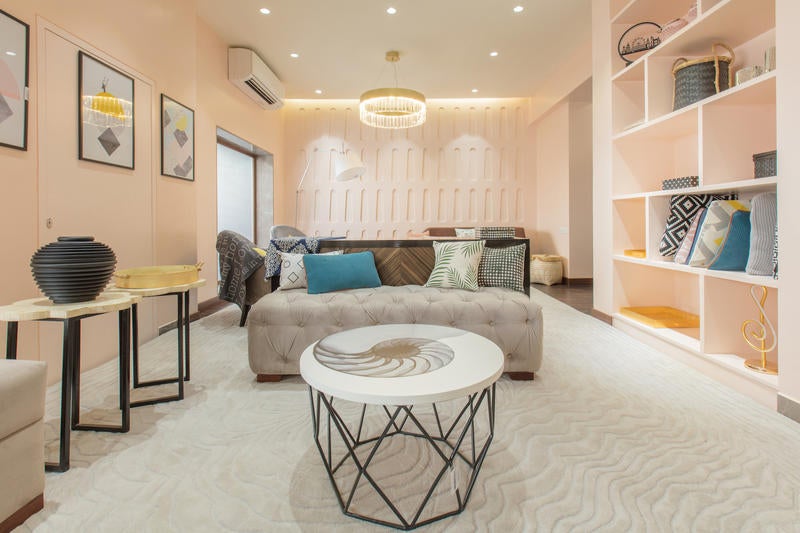
Hèrmosa Design Studio offers an interesting mix. Upon first glance, its collections are deceptively modern, with clean lines and a modular feel. But if you look closely, you’ll see touches of traditional Indian design everywhere—from sparkly metallics and mirrors to hints of wood and art-inspired embroidery.
The base of the design inspiration was the capital of minimalistic furniture itself: Sweden. “During the design journey, our research and development team located in Sweden came back to us with outstanding inspirations,” creative lead Mugdha Bhagchandka tells Business of Home. Wanting to target young, well-traveled millennials without losing the innate, rich culture that makes up Indian design, Bhagchandka realized that looking to Scandinavian design would help elevate the brand from other, more traditional designers.
“Hèrmosa’s aesthetics are very clean and sharp, along with affordable pricing,” explains Bhagchandka. “We feel there is a gap in the market for luxury home decor stores in tier-two cities [those with a population of 50,000 to 100,000], and therefore we market Hèrmosa as a one-stop shop for home decor and accessories.” The brand decided to expand into retail just two years ago (before, the company had focused on custom pieces). Commercial success soon followed.
“Minimalism is one of the latest trends for millennials,” says Bhagchandka. (Brands like Muji and IKEA are tremendously popular in India). “We are reaching out to an audience who are new-age, well-traveled homemakers. They know about the different global trends.”
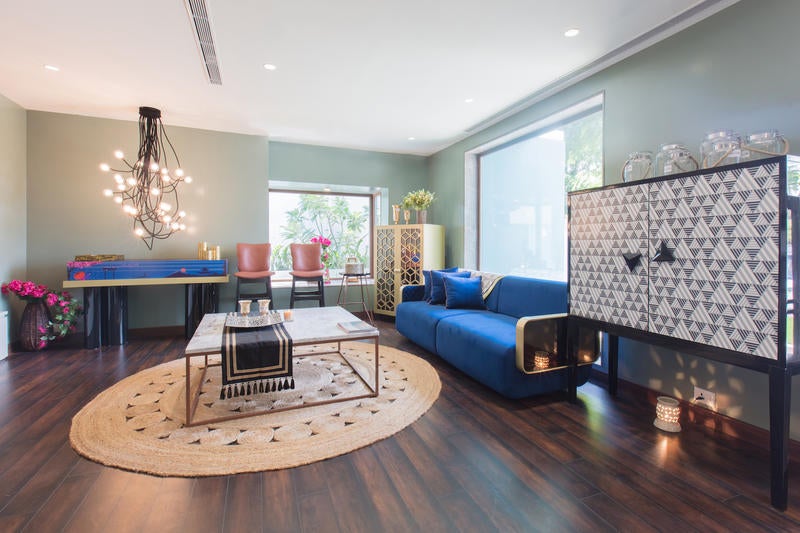
However, as affordable and trendy as foreign furniture makers are, their designers are ill-suited to tap into the rich culture of India—a melting pot of over-the-top opulence, wild patterns and colors, intricate embroidery, and an overarching theme of regalia. By combining the two sensibilities, Hèrmosa’s executives believe they have captured a unique market: customers who want the warmth and familiarity of Indian decor with the ease at which minimalist furniture can be mixed into the home.
“I believe that minimalism has always been a safer bet for home decor,” explains Bhagchandka. “Even though we are a Jaipur home brand, we have not restricted to the clichéd standards—we are catering to a much wider audience. So, we’ve tried to give our customers an avenue to be able to incorporate the trends they are seeing globally in their homes … but through a local store.”
The new store is a direct reflection of that ethos—the millennial pink storefront is an homage to both the past of the Pink City as well as its future. The three-floor maze reinterprets Jaipur’s handicrafts with cool, contemporary colors and materials, and uses luxurious marbles as a backdrop for the simpler, more modern furniture pieces. “The heritage and culture of India is so rich, the structural and architectural accents are the most attractive design aesthetics,” says Bhagchandka of the casual/cool mix. “The Indian design scene has evolved over the years, but the heritage and inspirations have remained intact.”
As for what’s ahead, the company has set its sights on a new wave of shopping technology. “We are looking to explore augmented reality for a better understanding of the designs, especially when it comes to themed furniture,” says CEO Pranjal Agarwal. With Indian millennials (and millennials anywhere, really) constantly on their phones, this seems like a logical next step.
















